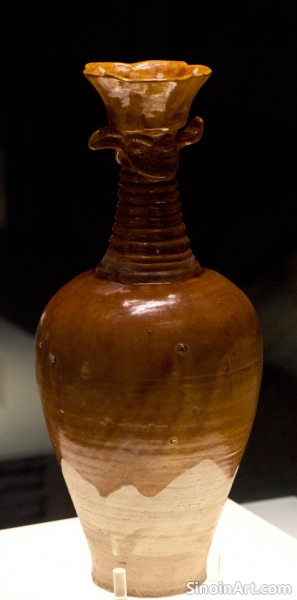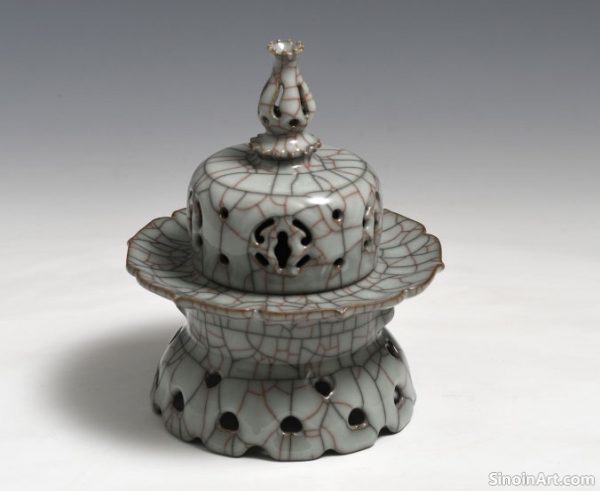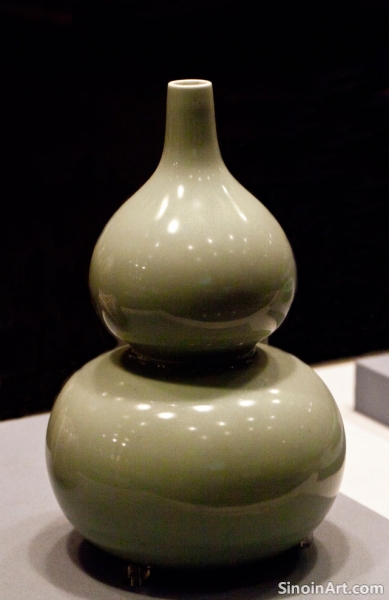The Simplicity and Elegance of Song Celadons
|
The Song Dynasty is often regarded as the golden age of Chinese ceramics, and Song celadon stands as a pinnacle of ceramic artistry. Characterized by its subtle green hues, ranging from pale jade to deep olive, Song celadon is celebrated for its elegant forms, smooth glazes, and understated decoration. Unlike the vibrant, multi-colored wares of the preceding Tang Dynasty, Song celadons embraced simplicity and a harmonious balance between form and glaze. The focus shifted to the intrinsic beauty of the material and the nuanced shades achieved through masterful kiln firing.  The technical advancements during the Song Dynasty were crucial to the refinement of celadon. Potters meticulously controlled kiln atmospheres, allowing for precise regulation of the iron oxide content in the glaze, resulting in the iconic green hues. Glazes were often thick and lustrous, creating a soft, jade-like texture that was highly prized. The emphasis was on achieving a consistent and flawless glaze surface, free from imperfections or excessive decoration. The kiln work was a vital element in the beauty and value of these pieces.  The forms of Song celadons are equally noteworthy. They are often characterized by simple, functional shapes, such as bowls, dishes, and vases, with graceful curves and elegant proportions. Decorative elements were generally restrained, often limited to subtle incised or carved designs, such as floral patterns, lotus petals, or simple geometric motifs. The pieces themselves were made for use, but with an artistic sensibility that made them beautiful and inspiring.  The appeal of Song celadon lies in its understated beauty and its ability to evoke a sense of tranquility and serenity. These ceramics were not meant to be flashy or ostentatious; they were designed to be appreciated for their intrinsic qualities and their subtle beauty, making them especially valued for use in tea ceremonies and other refined cultural events. Their enduring popularity and influence is a testament to their quality. Song celadons have had a lasting impact on ceramic art, influencing the styles and techniques of potters both in China and around the world. Their elegance and simplicity continue to inspire contemporary artists and collectors. The legacy of Song celadon is a key component of the wider history of Chinese ceramics. |
Tag : Song celadon, Chinese celadon, green glaze pottery, Song Dynasty ceramics, ancient Chinese pottery
Related information
- Song Dynasty Ceramics and the Tea Ceremony
- The Delicate Beauty of Ru Ware Porcelain
- The Dark Beauty of Jian Ware Tea Bowls
- The Influence of Tea Culture on Song Ceramics
- The Beauty of Celadon: Longquan and Beyond
The Song Dynasty saw the flourishing of tea culture, and ceramics played a central role in the rituals and practices surrounding tea consumption. Specific types of tea bowls, teapots, and other tea wares were developed to enhance the tea-drinking experience. The ritualistic elements of tea consumption made the ceramic pieces important elements of daily life in the Song period.
Ru ware, produced for a short period during the late Northern Song Dynasty, is among the rarest and most highly valued of all Chinese ceramics. Known for their delicate bluish-green celadon glaze, often described as the color of "sky after rain," Ru ware pieces are celebrated for their understated elegance, simple forms, and subtle crackle patterns. They are highly sought after by collectors and admired for their timeless beauty.
Jian ware tea bowls, produced in the kilns of Jianyang (modern-day Fujian province), are among the most revered ceramics of the Song Dynasty. Characterized by their dark, often black, glazes, often displaying a unique hare's fur or oil spot effect, Jian ware tea bowls were particularly prized by Zen Buddhist monks and tea connoisseurs for their aesthetic and functional qualities. The dark hues and varied patterning made them ideal for showcasing the light colour of the tea itself.
Song Dynasty tea culture had a profound impact on ceramics, leading to the creation of specialized tea bowls like Jian ware with unique glazes and forms, reflecting the period’s emphasis on simplicity, elegance, and mindfulness.
Celadon, a jade-like green glazed ceramic, is a hallmark of Song Dynasty pottery, especially Longquan celadon, known for its pure color, smooth texture, and elegant forms, and also includes distinctive styles like that of Yaozhou.